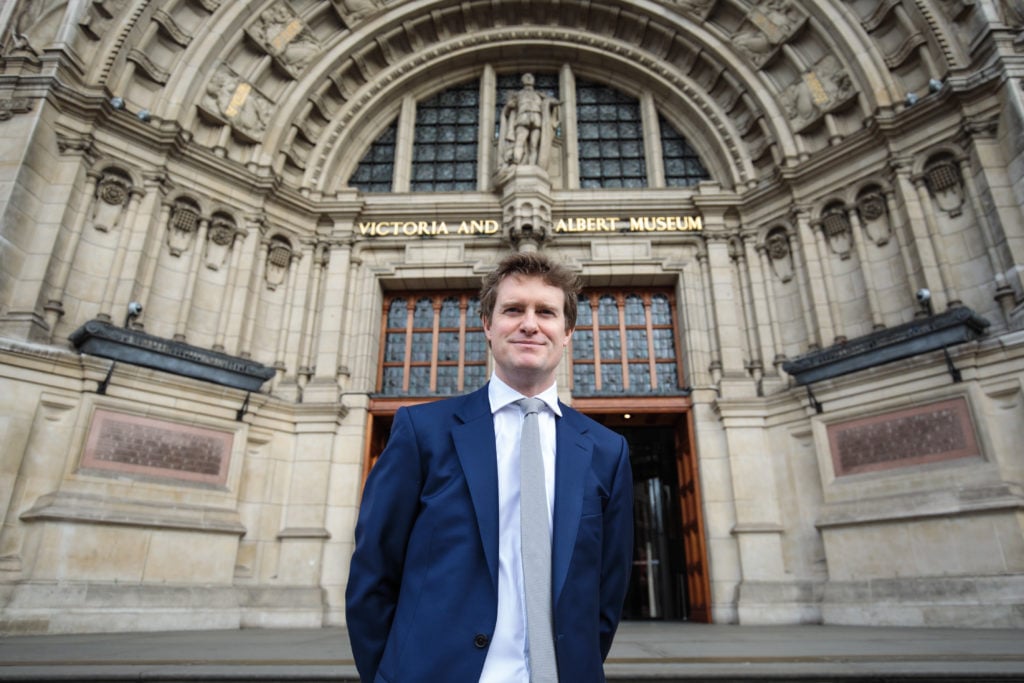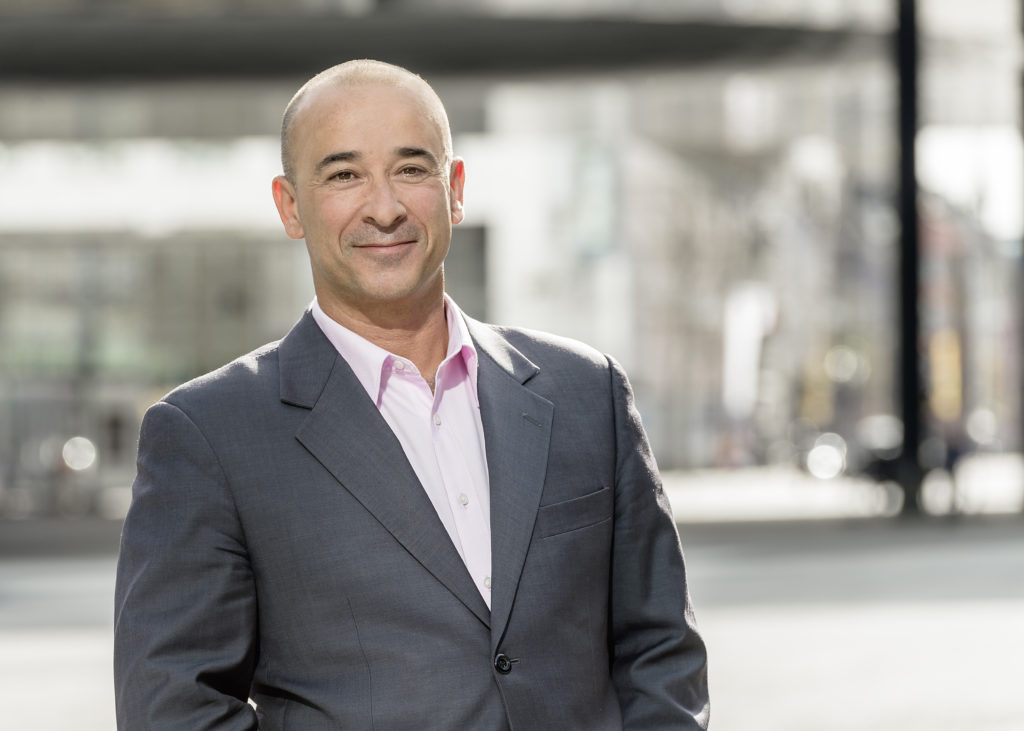Every Monday morning, artnet News brings you The Gray Market. The column decodes important stories from the previous week—and offers unparalleled insight into the inner workings of the art industry in the process.
This week, stories about gaps in the art system, and the downsides of their proposed fillings…
BIO-HAZARD
Last Monday, The Art Newspaper picked up a story broken a few days earlier by art historian Bendor Grosvenor, who noticed that Tate’s online biographies for artists are now often literal Wikipedia entries. Grosvenor exemplified the problems with this strategy by noting that the bio for Baroque great Anthony Van Dyck includes a misspelling of the artist’s last name embedded in a trivia tidbit—namely that, “the van Dyke [sic] beard is named after him.” Martin Bailey of TAN adds, “a check of Wikipedia entries on several other well-known artists by The Art Newspaper also reveals mistakes.”
Grosvenor (and later TAN) received a reply from a museum spokesperson stating that Tate “[does] not have the resources” to either write original bios for every artist entering the collection or regularly update existing bios for living artists. The spokesperson also offered that the museum’s staff is still responsible for about 100 artist bios, and that Tate is “working on a partnership with Wikipedia to ensure the biographies for artists in our collection are as accurate as possible.”
I’m sympathetic to the funding cuts gashing art museums worldwide. At the same time, I find it impossible to believe this is the best available solution, even for a resource-strapped institution. (In response to an email inquiry, a spokesperson says that Tate has not replaced any existing biographies with Wikipedia entries, but rather “introduced links to Wikipedia as an additional resource.” The museum also uses “other sources and links on its website,” she points out, which is “in common with other cultural institutions.”)

Screenshot of Tate’s Wikipedia-supplied online biography for Anthony Van Dyck, including a misspelling of the artist’s name, as of September 16, 2018.
Could Tate could have licensed another reputable British museum’s bios in exchange for some other non-monetary asset? Could it have partnered with universities to collect bios from art history grad students specializing in the periods or specific artists in question? Could it simply have paid a fair rate to some freelancers to quickly knock out respectable original content?
I’m not saying my off-the-cuff alternatives are perfect solutions—or that they wouldn’t require more significant time and energy on the part of museum staff than a Wikipedia band-aid. But are they worse than linking directly to a site where, at least for brief periods, novices, trolls, and/or ideologues regularly corrupt entries? For a fairly light-hearted example, consider when the Wikipedia record for children’s book classic Spot the Dog briefly defined it as a “series written by Ernest Hemingway under the pseudonym Eric Hill” that follows “a young Golden Retriever who struggles with alcoholism and a shattered sense of masculinity.”
It’s rare for me to side with traditional experts or the academy on much of anything. But the internet and social media have been flattening discourse to an unprecedented degree for years now, handing mischief-makers, crackpots, and malign actors the same platforms and standing as people who agonize over checking facts and making sound arguments.
I’m not saying that Anthony Van Dyck’s biography is as important as Brexit. But in my opinion, Tate isn’t just subjecting online users to a few harmless mistakes by outsourcing “scholarship” to Wikipedia. In a small-scale way, it is contributing to the erosion of truth and critical thinking in the digital age. And if an august scholarly institution will allow that, it’s a vivid example of how budget constraints in the arts can lead to much worse outcomes than just staff cutbacks or museum admission hikes.

Tristram Hunt, the director of the V&A in London. (Photo by Jack Taylor/Getty Images)
THE TAXMAN COMETH(?)
On Monday, the Telegraph relayed Victoria & Albert Museum director Tristram Hunt’s suggestion that the UK impose a “hotel tax” on international visitors to make up for diminished public arts funding. Citing similar fees already applied to rented rooms in tourist destinations such as New York, Rome, and Florence, Hunt sees such a charge as a better alternative than reversing Britain’s 2001 decision to make general admission free to collections isle-wide. (Temporary exhibitions generally carry a separate price.)
On one hand, this proposal seems eminently reasonable—and potentially lucrative, too. Statista.com reports that the UK hotel industry generated £18.4 billion ($24 billion) in revenue in 2016. Funneling even 0.5 percent of that total into arts and culture would mean a windfall of £92 million ($120.3 million).
The only problem is that the cities Hunt mentioned haven’t quite done what he’s suggesting. In Rome and Florence, hotel (or “tourist”) taxes are slated to pay for the maintenance and restoration of the cities’ many historical monuments, but they allocate nothing to museums or other arts nonprofits. And in a 2017 op-ed in Crain’s New York, former cultural affairs commissioner Luis R. Cancel confirmed, “New York City’s policymakers… have resisted calls to apply a percentage of hotel taxes to support the cultural sector, even though it is the primary driver of that hotel traffic.”
Why are these more than just procedural details? Because they demonstrate a crucial point: If officials and their constituents don’t see the arts as a worthy use of tax revenue, collecting more tax revenue probably isn’t going to change their minds.
Think about it this way: I feel pretty strongly that I have always looked dumb in hats. If I got a massive raise, being able to spend way more money on clothes wouldn’t suddenly compel me to waltz into Bloomingdale’s and go, “Oooh, these fedoras are FIRE!”
San Francisco is instructive here. In 1961, the city implemented a hotel tax of three percent, with more than half of the proceeds going to grants for the arts. The rate rose over the succeeding decades to a whopping 14 percent today.
However, as the tax rate climbed and tourism boomed, the percentage of proceeds earmarked for the arts plummeted. The city eventually cut specific allocations for the arts entirely in the early 2000s. So in less than half a century, cultural institutions went from being guaranteed more than half of $1.1 million—or about $9.25 million today—to none of the roughly $384 million generated by the hotel tax in the 2015-16 fiscal year.
Incidentally, 2016 was the same year that San Francisco residents voted down a proposition that would have once again allocated a percentage of the hotel tax to arts organizations and homelessness services. A new ballot measure this November could return 1.5 percent of the hotel tax to arts funding.
The takeaway here is discomforting. Whether on a personal or a national scale, money goes to what we prioritize—no matter how much money is available. So while Hunt’s idea could have promise, I don’t think changing tax policy will matter until, or unless, average British citizens change their minds about how much the arts matter. And just as in the US, it sounds like making that happen requires much more than we’ve been doing for a long, long time.

Patrick Foret, director of business initiatives, Art Basel. Photo courtesy of Art Basel.
‘CITIES’ ON THE HILL
Finally this week, artnet News editor-in-chief Andrew Goldstein interviewed Patrick Foret, director of business initiatives for Art Basel, about the organization’s inaugural Art Basel Cities “experiment” in Buenos Aires. And one of the central themes of the chat was the alchemy of money, ethics, and sustainability.
In early September, Argentine newspaper El Diario Z criticized the government for spending more than $2 million on Art Basel Cities while the peso was in free fall and Buenos Aires’s hallowed Alvear Theater had been closed for four years due to funding cuts. With the effects of the novel art initiative still largely unknown, one unnamed local collector even quipped that the capital had “bought smoke.”
Foret politely dismisses these slams by clarifying that the public funding Art Basel received came not from the struggling federal government of Argentina, but from the municipal government of Buenos Aires, which he describes as “very solid economically” and equipped with “its own cultural budget.” Still, I’m less interested in how much money Buenos Aires contributed to Art Basel than in how much money Art Basel contributed to Buenos Aires.
Foret directed Goldstein to government officials when he asked about the total cost of the initiative, meaning at this point we have no idea how much external investment is involved. But Foret explains that “we [Art Basel] self-contribute with corporate funding” led by UBS, as well as bringing in local corporate sponsors “who have never contributed to the arts” to avoid diverting existing patrons from Argentine artists and institutions.
Given the financial contours of the 21st century, I’m nevertheless pretty confident that the external investment here is substantial—and, I would guess, substantially larger than what the city and its taxpayers poured into the pot. Inside and outside the arts, this era isn’t just defined by the retreat of public funding. It’s also defined by the simultaneous, aggressive advance of private funding, which is now flooding many of the parched lakebeds left behind by the evaporation of large-scale government contributions to the arts.
Is that bad? Not necessarily. But everything depends on execution. In discussing the widescreen vision for Art Basel Cities, Foret mentions that he thinks Richard Florida’s The Rise of the Creative Class—the 2002 book that proposed cities could thrive by luring knowledge workers and hipster entrepreneurs with the catnip of walkable neighborhoods, smart public transit, and artisanal everything—is now “accepted as fact.” But even Florida has since recognized his theories created fault lines he didn’t expect.
In an interview for his 2017 follow-up The New Urban Crisis, Florida admits, “I under-predicted the extent of the division caused by this clustering force.” Today, he sees that the development strategy he recommended almost 20 years earlier wrought “spatial inequality within cities,” “a winner-take-all dynamic between the winning cities and the losing cities,” and a class-based antagonism that powered the rise of populist disaster-merchants like Rob Ford and Donald Trump.
Art Basel has been working on the Buenos Aires project for two years, and Foret again and again emphasizes the organization’s commitment to collaborating closely with the city and the local art scene for everyone’s long-term health. Still, Art Basel Cities is an unprecedented experiment in cultural intervention—and no matter how smart, sensitive, and well-intentioned the people involved may be, the specter of Richard Florida should remind us that there are no guarantees about the experiment’s outcome.
That’s all for this edition. ‘Til next time, remember: Nature abhors a vacuum, and what comes in can create abhorrence all its own.
Follow Artnet News on Facebook:
Want to stay ahead of the art world? Subscribe to our newsletter to get the breaking news, eye-opening interviews, and incisive critical takes that drive the conversation forward.








